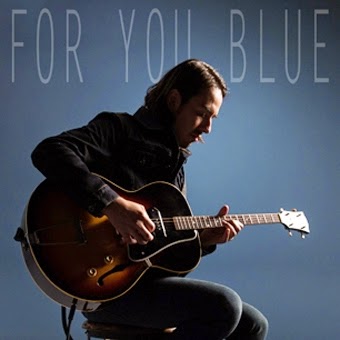It’s the second week of the month and for the next seven days I’ll be featuring music that uses the tenor guitar. A four string instrument that was devised probably in the 1920s, the tenor guitar was introduced so that tenor banjo players could have a second instrument on which to double. Its height of popularity was probably in the 1930s and this somewhat waned over the following decades until the 2000s when more manufacturers began to offer tenors again.
There are acoustic tenors, electric tenors, 8-string tenors, and resonator tenor guitars. Most major manufacturers at one time or another have had tenor guitars as production models. It is a neat little instrument that I got acquainted with as a child, as my dad had a Domino tenor guitar. It later became my brother’s first instrument equipped with an Olson Electronics’ pickup.
I got my first tenor guitar in 1986 when I got a call from the late Alan Martin who said a couple was driving through town and had a Gibson tenor for sale for $80. He wondered if I would be interested in the instrument, so I drove quickly to the mall, made a cash withdrawal, and bought it on the spot. It is a 1931 Gibson TG-1 and I play it every so often. It needs a little work – with a neck resetting job being the primary repair that would make it play even better.
 |
| The author and his Gibson Tenor, 1987 |
How do you tune a tenor guitar? Well according to the Tenor Guitar list, that can be hotly contested topic. Since tenor guitars were made as a second instrument for tenor banjo players, the logical tuning might be C-G-D-A; however, not every tenor player uses that tuning. Other tunings mimic an octave mandolin (G-D-A-E), an Irish bouzouki (G-D-A-D), a guitar/baritone ukulele (D-G-B-E), tenor ukulele (G-C-E-A), Greek bouzouki (C-F-A-D), open G (D-G-B-D), and open D (D-F#-A-D) to name a few. I think I’ve used most of these, but I personally prefer C-G-D-A.
For our first look at the tenor guitar, we feature the biggest hit to my knowledge that used the instrument. Gunnar Nelson tells the story of how the tenor guitar became the rhythm instrument for one of Rick Nelson’s biggest hits: “Hello Mary Lou.”
“Did you know that our dad's iconic #1 song 'Hello Mary Lou' has no drums on it? Guess what's the only thing keeping that great rhythm throughout the song? You guessed it. Ozzie Nelson on his tenor guitar!
The legend has it that they were in the studio one night listening to demos, and they happened upon Hello Mary Lou. In the studio was our father, James Burton [lead guitarist], Joe Osborne [bassist], the engineer, and Ozzie. Our grandfather was always busting our dad’s chops- because Ozzie was a band leader from decades earlier . . . And our dad just through a ribbing said ‘too bad you don't have your tenor guitar here Pop . . . You could play on this one.’
The conversation continued in the studio. No one really noticing that Ozzie had disappeared. Ten minutes later, he shows up at the studio, tenor guitar in hand, having gone back to the house to get it. The recording session commenced without the drummer present . . . And the rest is rock and roll history.”
Well if you listen to the song, it appears that there are drums and a cowbell on this tune, but it is obvious that the rhythm is being carried by the tenor guitar. Other sources list Richie Frost on drums and Ray Johnson on piano in addition to Burton and Osborne. Written by Gene Pitney, “Hello Mary Lou” is a perfect start to our Second Week series on the tenor guitar. Although a B-Side, “Hello Mary Lou” charted at #9 in 1961. Its A-Side was the #1 hit “Travelin’ Man.”






















